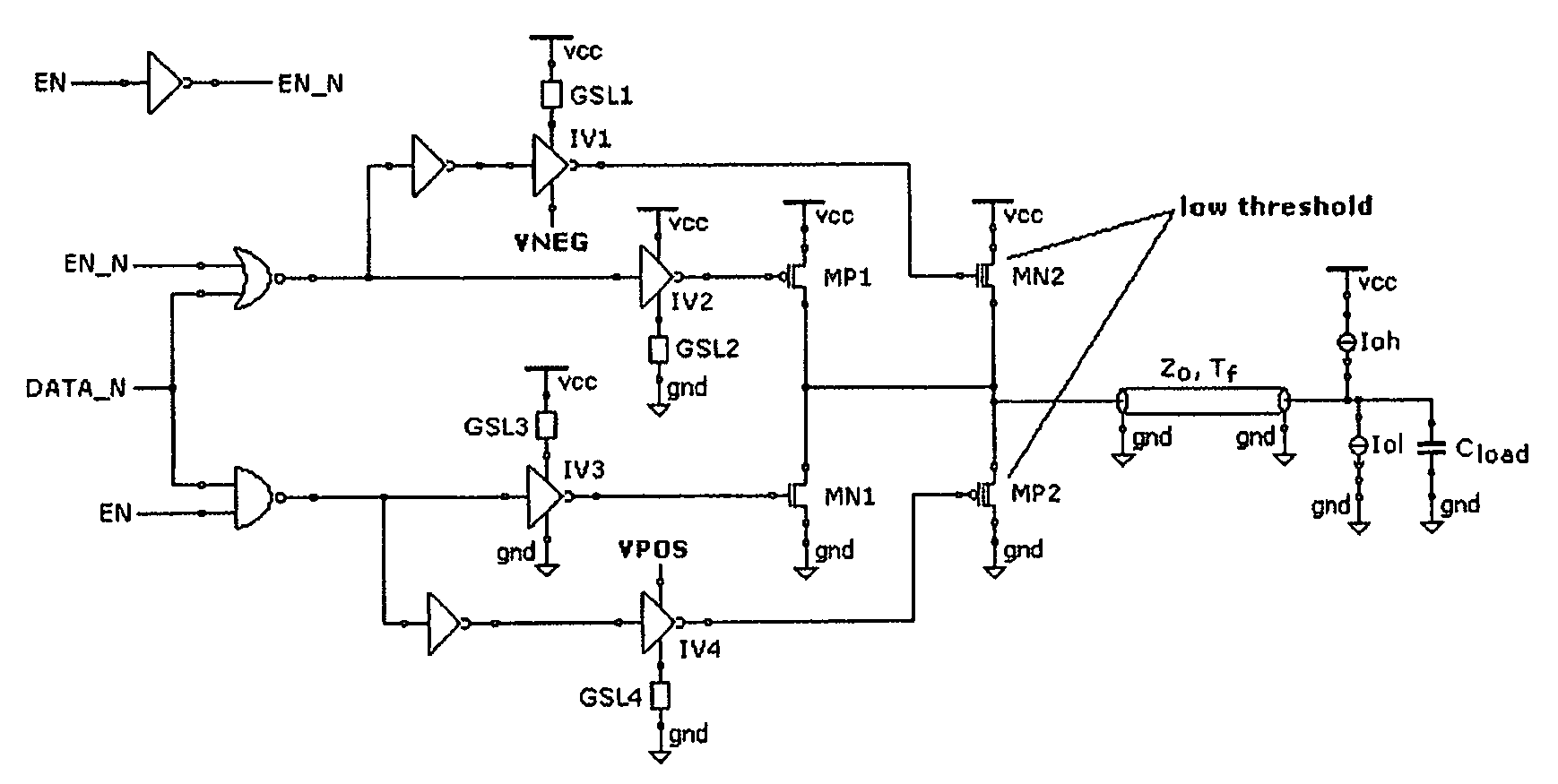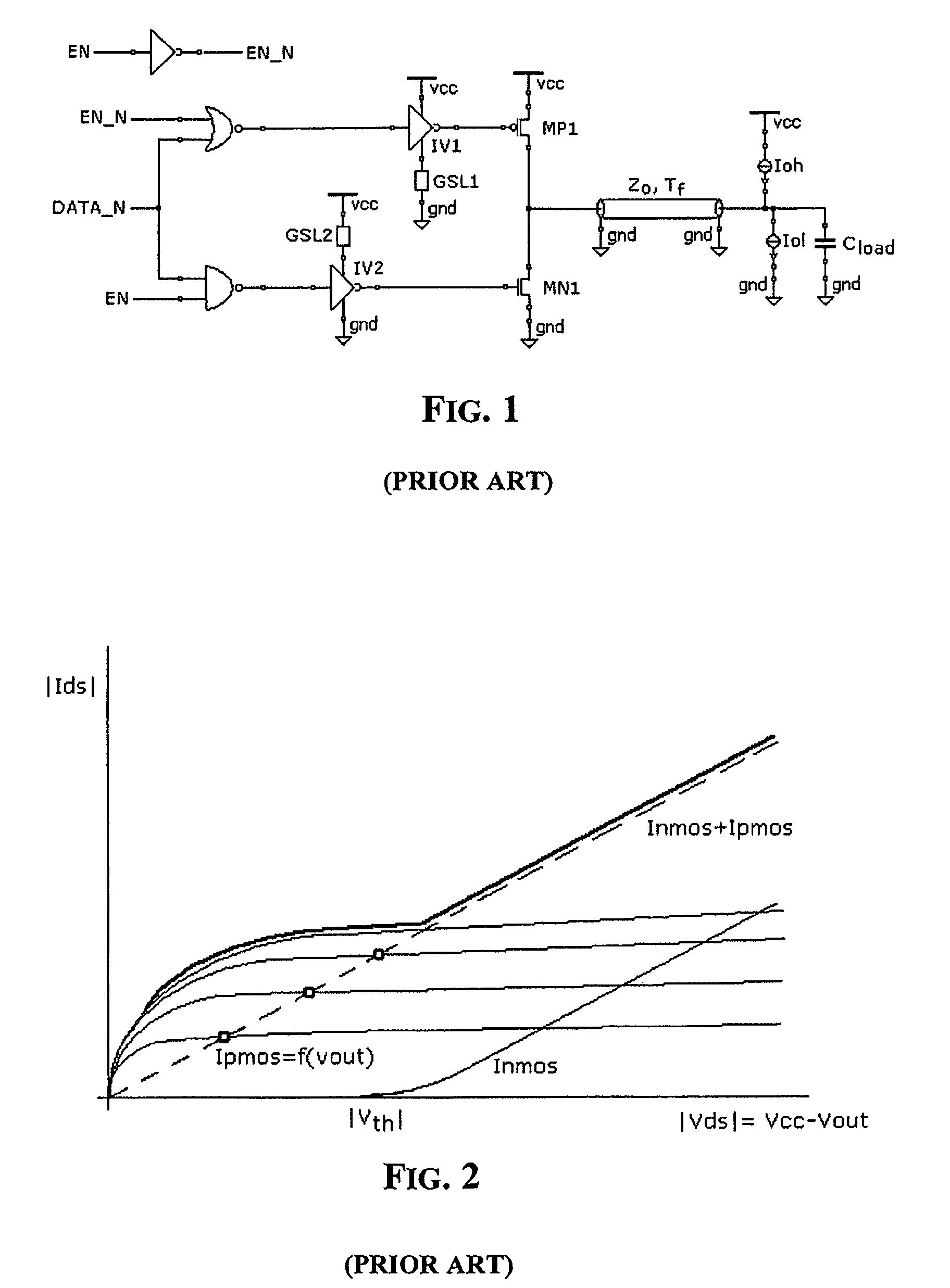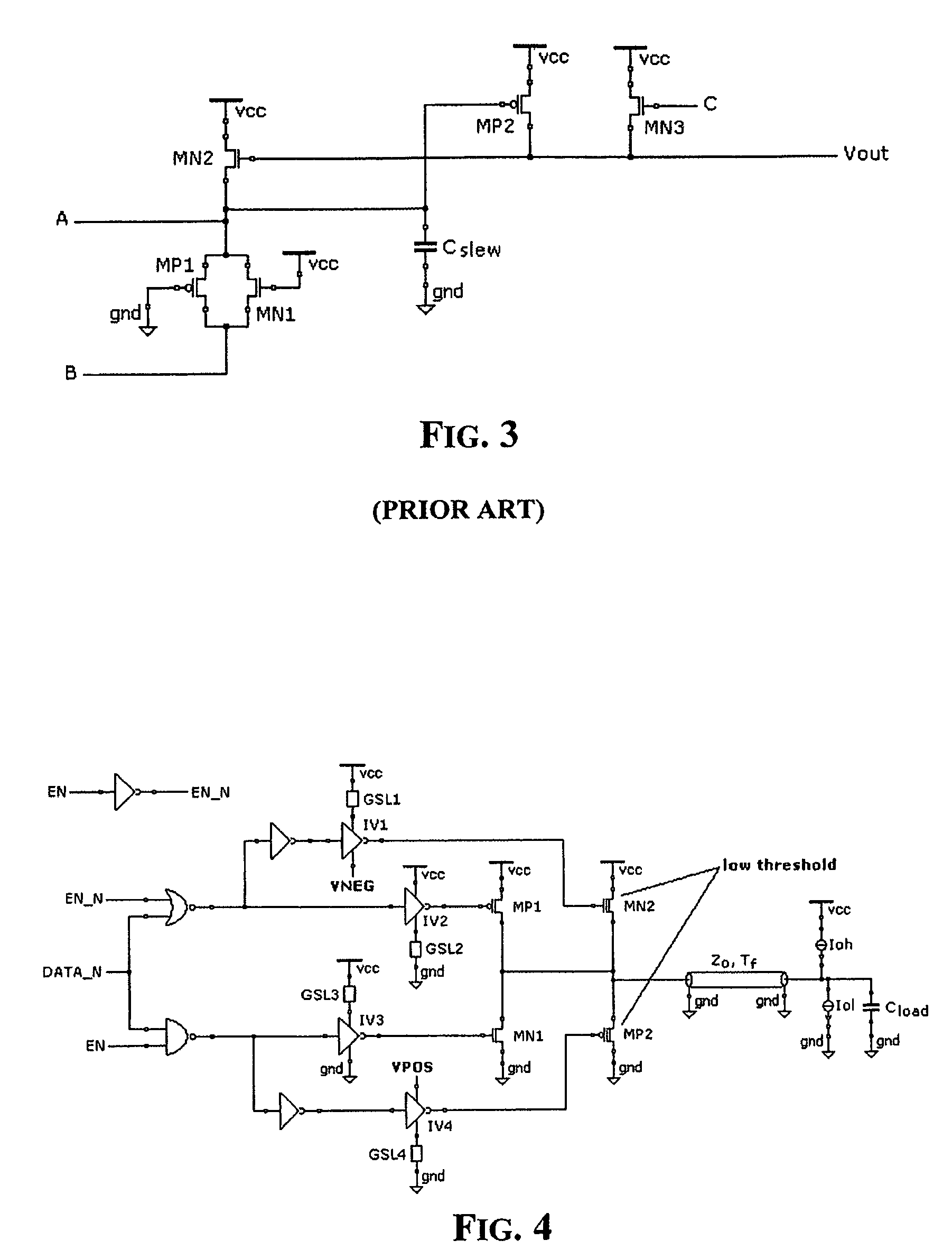High speed CMOS output buffer for nonvolatile memory devices
a memory device and output buffer technology, applied in logic circuits, power consumption reduction, electric pulse generators, etc., can solve the problems of buffer not meeting the above mentioned requirements, complex transmission, and increasing circuit complexity, so as to reduce or minimize the contribution to power consumption
- Summary
- Abstract
- Description
- Claims
- Application Information
AI Technical Summary
Benefits of technology
Problems solved by technology
Method used
Image
Examples
Embodiment Construction
[0026]FIG. 4 depicts a basic circuit diagram of an output buffer according to the invention. The natural MOS transistors are MN2, MP2, and the supply terminals of the inverters IV1 and IV4, not connected to the gate slew limiters for controlling the slope of the gate signals of the output drivers (that is the slope of the variation of the gate voltage) (GSL) that are not directly grounded or connected at the voltage Vcc, but to the supply nodes VNEG and VPOS, respectively.
[0027]In commanded stand-by conditions, or in self-stand-by conditions, VNEG is negative and its absolute value is relatively small, VPOS is positive and slightly higher than Vcc. The voltages VPOS and VNEG are used for preventing circulation of the under-threshold current through the “low threshold” MOS. These transistors are relatively large and the under-threshold current that flows therethrough may become relatively large and may become uncontrolled because of process spreads, supply fluctuations and temperatur...
PUM
| Property | Measurement | Unit |
|---|---|---|
| output resistance | aaaaa | aaaaa |
| conductivity | aaaaa | aaaaa |
| threshold voltage | aaaaa | aaaaa |
Abstract
Description
Claims
Application Information
 Login to View More
Login to View More - R&D
- Intellectual Property
- Life Sciences
- Materials
- Tech Scout
- Unparalleled Data Quality
- Higher Quality Content
- 60% Fewer Hallucinations
Browse by: Latest US Patents, China's latest patents, Technical Efficacy Thesaurus, Application Domain, Technology Topic, Popular Technical Reports.
© 2025 PatSnap. All rights reserved.Legal|Privacy policy|Modern Slavery Act Transparency Statement|Sitemap|About US| Contact US: help@patsnap.com



